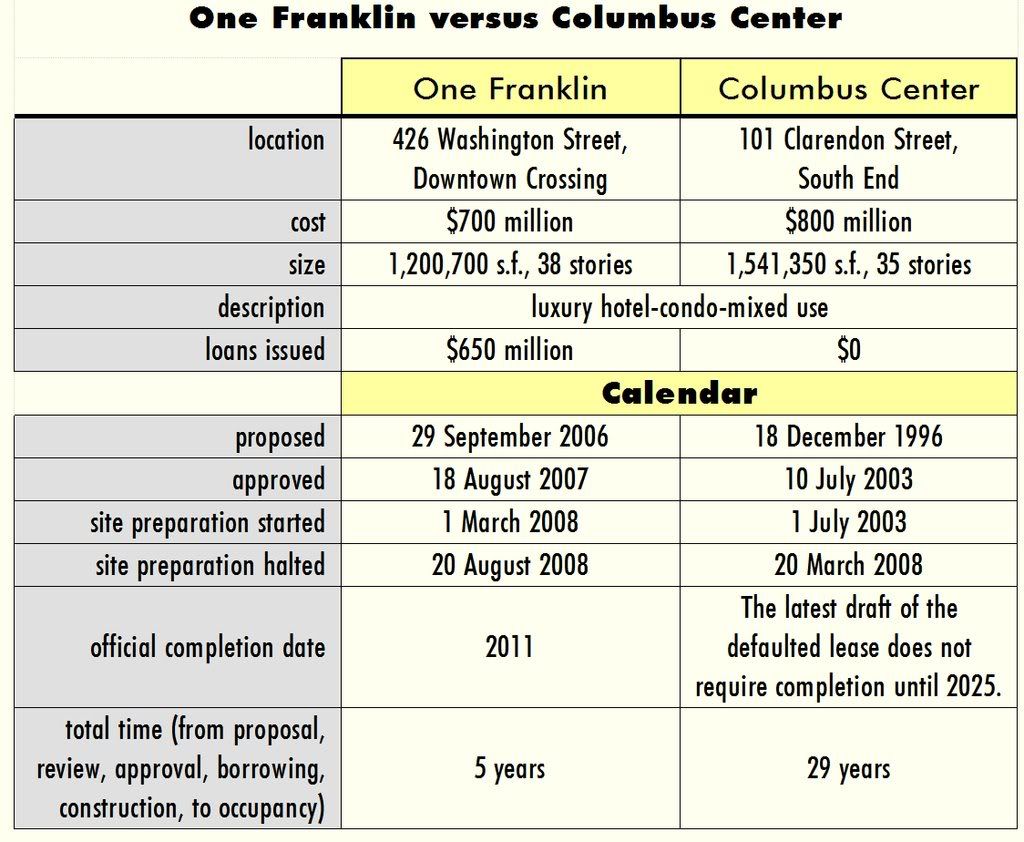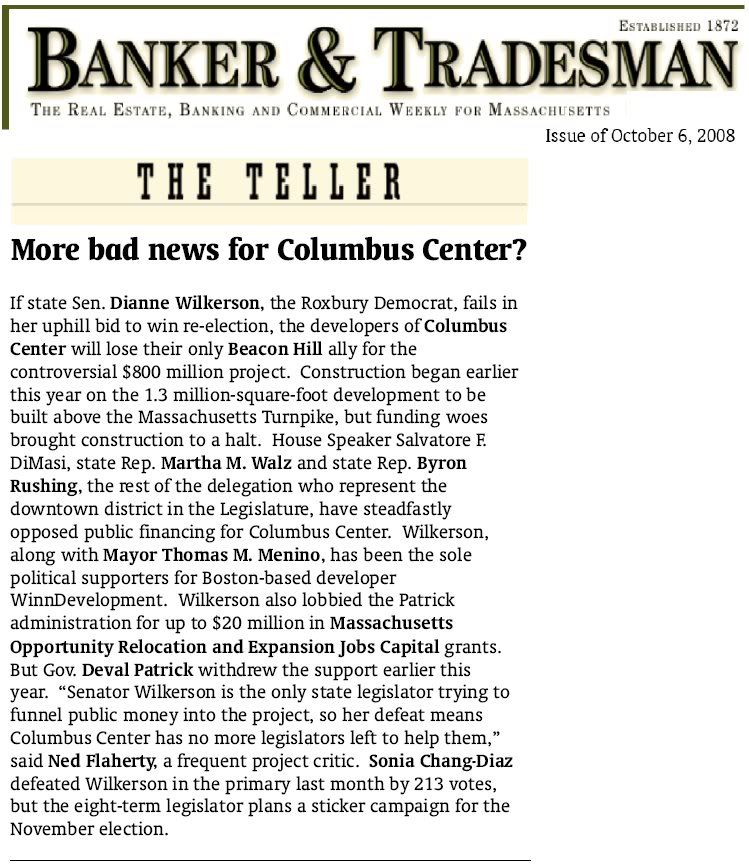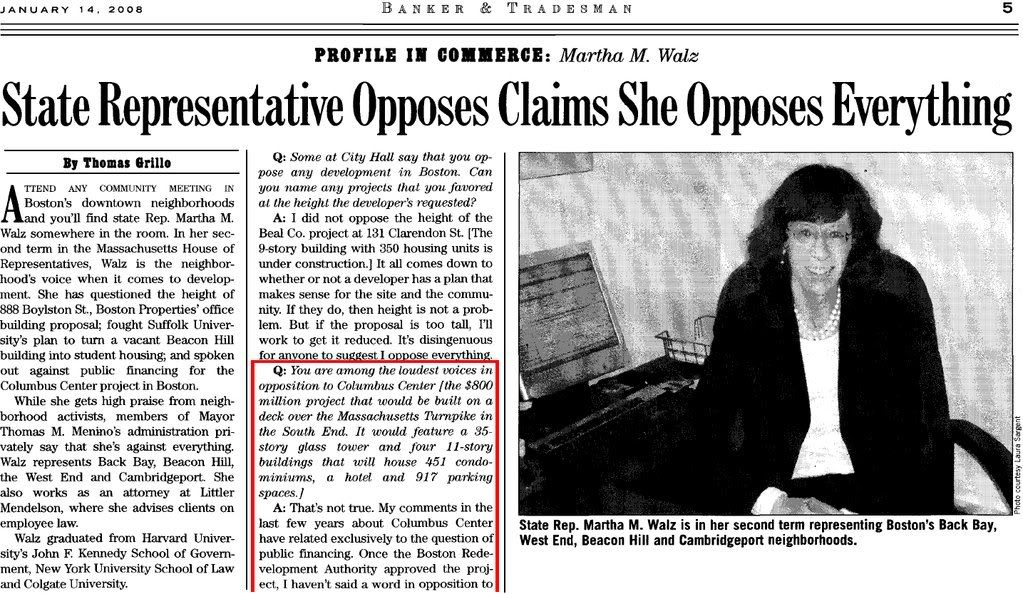Ned Flaherty
Active Member
- Joined
- Aug 25, 2007
- Messages
- 486
- Reaction score
- 0
Re: Columbus Center
Your 4 most important numbers are wrong.
Acreage ? You incorrectly wrote that Columbus Center?s 7 acres is ?Ned?s estimate?. _ But the 7-acre figure is neither mine, nor is it an estimate. _ The city?s Planned Development Area Development Plan itemizes the project as ?303,742 square feet, approximately 6.97 acres? (BRA, 19 November 2003). And California wrote in its latest subsidy application, signed under pains and penalties of perjury, that the project size is ?almost 7 acres?.
Housing units ? You incorrectly wrote that the housing units total ?343? and ?15%? (37 units) are affordable. _ But the latest lease is for 447 units, and only 10% are affordable.
Hotel rooms ? You incorrectly wrote that the hotel is ?191 rooms?. _ But the latest public subsidy application is for 162 hotel rooms.
Square footage ? You incorrectly wrote that the project square footage is ?1,063,930 s.f.?. _ But the latest lease is for 1,541,350 s.f.
Having under-counted 23% of the housing (104 units), over-counted 18% of the hotel rooms (29 rooms), and under-counted 31% of the project size (477,420 square feet), you may want to just start this over from scratch.
No. _ By state law, turnpike air rights are un-zoned, so there?s nothing misleading about saying so. _ And a site where everything that gets proposed is already subject to zoning is far less valuable than a site where anything can be proposed because there is no zoning.
After correcting and re-calculating the 4 data points above, do you still say Haywood [sic] Place is ?entitled to be 285%? as dense as Columber [sic] Center? And if so, how do you arrive at that?
. . . Columbus Center = 7 acres (Ned's estimate that I didn't check) . . . 343 Residential Units (including 15% affordable) . . . 191 Hotel Rooms . . . 1,063,930 sq. ft. . . .
Your 4 most important numbers are wrong.
Acreage ? You incorrectly wrote that Columbus Center?s 7 acres is ?Ned?s estimate?. _ But the 7-acre figure is neither mine, nor is it an estimate. _ The city?s Planned Development Area Development Plan itemizes the project as ?303,742 square feet, approximately 6.97 acres? (BRA, 19 November 2003). And California wrote in its latest subsidy application, signed under pains and penalties of perjury, that the project size is ?almost 7 acres?.
Housing units ? You incorrectly wrote that the housing units total ?343? and ?15%? (37 units) are affordable. _ But the latest lease is for 447 units, and only 10% are affordable.
Hotel rooms ? You incorrectly wrote that the hotel is ?191 rooms?. _ But the latest public subsidy application is for 162 hotel rooms.
Square footage ? You incorrectly wrote that the project square footage is ?1,063,930 s.f.?. _ But the latest lease is for 1,541,350 s.f.
Having under-counted 23% of the housing (104 units), over-counted 18% of the hotel rooms (29 rooms), and under-counted 31% of the project size (477,420 square feet), you may want to just start this over from scratch.
. . . the claim that is un-zoned . . . is misleading, because it is still only entitled to allow for what was approved.
No. _ By state law, turnpike air rights are un-zoned, so there?s nothing misleading about saying so. _ And a site where everything that gets proposed is already subject to zoning is far less valuable than a site where anything can be proposed because there is no zoning.
. . . Haywood Place is entitled to be 285% as dense as Columber Center! . . .
After correcting and re-calculating the 4 data points above, do you still say Haywood [sic] Place is ?entitled to be 285%? as dense as Columber [sic] Center? And if so, how do you arrive at that?




